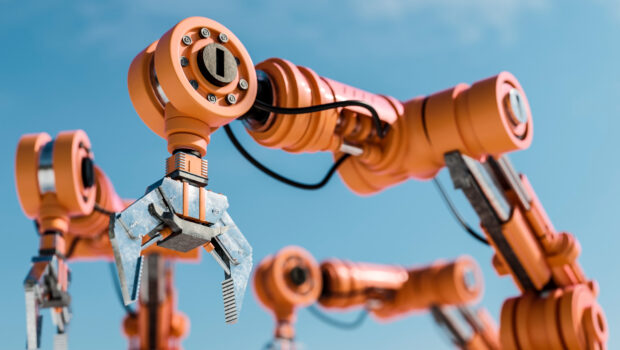Enhancing Precision and Efficiency with Collaborative Robotic Grippers
The need for automation has never been more pressing than in today’s rapidly evolving landscape. Robotic grippers play a crucial role in this automation, serving as the interface between robots and the objects they handle. Precision and efficiency are paramount in manufacturing and logistics, where even minor errors can lead to significant costs and delays. Collaborative robotic grippers are emerging as game-changers, enabling robots to work alongside humans safely and effectively.
Understanding Collaborative Robotic Grippers
Collaborative robotic grippers, often referred to as cobot grippers, are designed to work in tandem with human operators. They come in various types, including mechanical grippers, vacuum grippers, and soft grippers. One innovative example in this space is Hand-E, a cutting-edge collaborative gripper that enhances the flexibility and safety of robotic applications. Hand-E is engineered to handle a wide range of objects, adapting seamlessly to different shapes and sizes. Compared to traditional robotic grippers, collaborative grippers like Hand-E offer enhanced safety features that allow them to operate in close proximity to humans without the need for safety barriers. This capability is vital in environments where flexibility and interaction between human workers and robots are essential.
The Importance of Precision in Automation
Precision in manufacturing is critical for ensuring that components fit together correctly, thereby maintaining quality and functionality. In industries like aerospace, automotive, and electronics, the tolerances for errors are often extremely tight. Collaborative grippers play a key role in achieving this precision by providing consistent and reliable handling of components.
Traditional handling systems may struggle with maintaining precision due to factors such as wear and tear, human error, and environmental variability. Collaborative grippers, on the other hand, leverage advanced sensors and control systems to ensure accurate positioning and handling, thereby mitigating these issues.
Enhancing Efficiency with Collaborative Grippers
One of the most significant advantages of collaborative grippers is their ability to automate repetitive tasks, which dramatically increases productivity. By taking over mundane and time-consuming operations, these grippers allow human workers to focus on more complex tasks that require critical thinking and creativity.
For instance, in assembly lines, collaborative grippers can optimize workflows by ensuring that parts are delivered at the right time and in the right place. This orchestration not only speeds up production but also reduces the likelihood of bottlenecks. Companies that have integrated collaborative grippers into their operations often report marked improvements in efficiency and reduced cycle times.
Applications of Collaborative Robotic Grippers
Collaborative robotic grippers find applications across a wide range of industries, including:
- Automotive: In car manufacturing, collaborative grippers are used for assembling components, lifting heavy parts, and even quality control checks.
- Electronics: These grippers excel in handling delicate components, such as circuit boards and screens, where precision is crucial.
- Food and Beverage: Collaborative grippers can automate the sorting and packaging of products, ensuring hygiene and speed in operations.
- Pharmaceuticals: In this highly regulated industry, collaborative grippers help in sorting and packaging medicines, maintaining strict adherence to quality standards.
By excelling in these applications, collaborative grippers improve overall efficiency and consistency, contributing to the bottom line.
Flexibility and Adaptability
One of the standout features of collaborative robotic grippers is their flexibility. These grippers are engineered to handle a wide variety of shapes, sizes, and materials, making them indispensable in dynamic manufacturing environments. For instance, the Hand e gripper is specifically designed to switch between different tasks with minimal downtime, allowing it to adapt seamlessly to the diverse demands of a production line.
This adaptability extends to both the physical design of the gripper and its programming capabilities. Collaborative grippers often feature interchangeable fingers or attachments that can be customized for specific applications, such as gripping delicate electronic components or handling larger, heavier industrial parts. This versatility enables manufacturers to implement a single gripper across multiple processes, reducing the need for specialized equipment.
Moreover, the ability to quickly reprogram collaborative grippers for various tasks further enhances their adaptability. Operators can easily adjust the gripper’s settings to accommodate changes in product design or workflow requirements without the lengthy setup times associated with traditional robotic systems. This quick reconfiguration capability not only boosts productivity but also allows manufacturers to respond swiftly to changing market demands, ensuring they can remain competitive in an ever-evolving landscape.
Collaboration Between Humans and Collaborative Grippers
The essence of collaborative gripper technology lies in its ability to foster human-robot collaboration. Instead of replacing human workers, these grippers are designed to support them. For example, while a collaborative gripper handles the repetitive lifting of heavy components, human operators can focus on assembling intricate parts or quality checks.
To maximize productivity, training is essential. Workers must understand how to effectively collaborate with grippers, leveraging their capabilities while ensuring safety. This partnership not only enhances workflow efficiency but also leads to greater job satisfaction among human operators.
Quality Assurance and Safety
Quality assurance is a critical component of manufacturing, and collaborative grippers play a significant role in this area. By ensuring that components are handled with precision and care, these grippers contribute to maintaining high-quality standards.
Safety is another crucial consideration. Collaborative grippers come equipped with features that protect human workers during operation. For instance, they can detect human presence and automatically slow down or stop when someone is nearby. Maintaining safety standards and compliance is essential for fostering a secure working environment, particularly in industries with stringent regulations.
Cover Image: Freepik








![A Roadmap To Great Content – From Idea To Viral Post [Infographic]](https://technofaq.org/wp-content/uploads/2018/04/roadmap-to-content-150x150.jpg)







